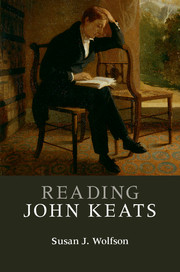Book contents
- Frontmatter
- Dedication
- Contents
- List of figures
- Preface
- Acknowledgments
- Note on the texts
- List of abbreviations
- 1 Life and times
- 2 Conceiving early poems, and Poems
- 3 Falling in and out of love with Endymion: A Poetic Romance; rereading King Lear
- 4 Venturing “new Romance”: Isabella; or, The Pot of Basil. A STORY FROM BOCCACCIO
- 5 Falling with Hyperion
- 6 Still Romancing: The Eve of St. Agnes; a dream-sonnet; Labelle dame
- 7 Reforming the sonnet and forming the Odes of spring 1819: Psyche; Nightingale; Grecian Urn; Melancholy; Indolence
- 8 Writhing, wreathing, writing Lamia
- 9 Falling in Fall 1819: The Fall of Hyperion and To Autumn
- 10 Late poems & lasting Keats
- A few famous formulations
- At a glance: Keats in context
- Notes
- Further reading
- Index
4 - Venturing “new Romance”: Isabella; or, The Pot of Basil. A STORY FROM BOCCACCIO
Published online by Cambridge University Press: 05 June 2015
- Frontmatter
- Dedication
- Contents
- List of figures
- Preface
- Acknowledgments
- Note on the texts
- List of abbreviations
- 1 Life and times
- 2 Conceiving early poems, and Poems
- 3 Falling in and out of love with Endymion: A Poetic Romance; rereading King Lear
- 4 Venturing “new Romance”: Isabella; or, The Pot of Basil. A STORY FROM BOCCACCIO
- 5 Falling with Hyperion
- 6 Still Romancing: The Eve of St. Agnes; a dream-sonnet; Labelle dame
- 7 Reforming the sonnet and forming the Odes of spring 1819: Psyche; Nightingale; Grecian Urn; Melancholy; Indolence
- 8 Writhing, wreathing, writing Lamia
- 9 Falling in Fall 1819: The Fall of Hyperion and To Autumn
- 10 Late poems & lasting Keats
- A few famous formulations
- At a glance: Keats in context
- Notes
- Further reading
- Index
Summary
On its way to Keats's generation, the genre of “romance” devolved from Spenser's national epic of moral trial to escapist fantasia – at best, picking up some credit as passionate resistance to the regime of things as they are. Keats called on this spirit in subtitling Endymion “a Romance,” insisting to his publishers in March 1818 that “a ramance is a fine thing notwithstanding the circulating Libraries” (L 1:253). The wry spelling parodies the popular fiction loved by female library patrons and some men slumming on the sly. The “new Romance” that Keats projected to Reynolds would ruffle the market on two fronts, and with gendered force: exposing the delusions of “old Romance” and casting modern meta-Romance, its devices demystified, its spells spelled out, and with such ultimate severity against fair-lady readers as to give Isabella; or, The Pot of Basil the cast of an “anti-Romance.”
Keats took an outline from a tale in Boccaccio's Decameron. Isabella and her brothers' clerk Lorenzo are passionately in love. The brothers regard Isabella as a capital asset, on ice for one of their ruthless “trade designs,” namely, marriage to “some high noble and his olive-trees” (XXI). Luring Lorenzo off on a hunt, they murder him, telling Isabella that he had to leave suddenly on business. His ghoulish ghost appears to her in a dream to report his woe and where he's buried. Isabella digs up his body, severs its head, brings it home, pretties it up, and hides it in a pot of basil, the plant flourishing from her incessant tears and then some. Detecting her doting on the basil-pot, her brothers filch it and uncover its ghastly secret. In panic of exposure, they flee and Isabella goes mad in mourning her lost basil, dies in misery, survived by a song of grief.
“Ah! wherefore all this wormy circumstance?”
Doomed love, murder, horrid dreaming, exhumation, corpse-decapitation, pathological fetish, and fatal melancholy: quite a shift from the skyenchanted poet of Endymion! Keats is retailing wares worthy of a circulating library (gothic shelf).
- Type
- Chapter
- Information
- Reading John Keats , pp. 50 - 57Publisher: Cambridge University PressPrint publication year: 2015



